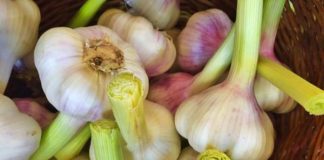
We all know that fruit is good for us and that we should be eating enough to meet our needs but do you?
The United States Department of Agriculture states on the MyPlate.gov website that the recommendations for fruit intake for the following groups are;
- Children 2 – 3 years: 1 cup
- Children 4 – 8 years: 1 – 1 ½ cups
- Girls 9 – 13 years, and 14 years – 18 years: 1 ½ cups
- Boys 9 – 13 years: 1 ½ cups
- Boys 14 – 18 years: 2 cups
- Women aged 19 – 30 years: 2 cups
- Women aged 31 – 50 years, and 51 plus years: 1 ½ cups
- Men aged 19 – 30 years, 31 – 50 years, and 51 plus years: 2 cups
If you are more active you may need even more than the recommended serve.
A cup is defined as 1 cup of fresh fruit, ½ cup of dried fruit, or 1 glass of 100% fruit juice. It is important to recognise that this is 100% fruit juice not fruit juice concentrate or fruit juice mix. 100% fruit juice still contains many of the nutrients and is actual juice of the fruit. It is important to limit your fruit juice consumption to 1 glass of 100% fruit juice a day – you cannot have all of your fruit serves as juice. This is because it will not full you up as much (liquid empties quicker from the stomach) and you may not get as much fibre from the juice.
It is also important to remember that dried fruit is much more energy dense than fresh fruit. It contains more energy because a lot of the moisture content has been removed. It can also be very easy to over-eat dried fruit as it is usually served in small pieces. Just keep in mind that it will contain more energy than fresh so you may like to remove it or limit your portion size.
In addition to fresh and dried fruit you can also purchase canned and frozen fruit. Although canned and frozen fruit may seem less nutritious than fresh, sometimes than can actually have more nutrients as they have not been transported and left waiting on the store shelves. If you buy canned fruit try to buy fruit that is in juice, not syrup. Syrup has much more sugar. Frozen fruit can really help if you are looking for a product that is out of season, for example blueberries. Keeping a bag of frozen blueberries in your freezer makes it easy to incorporate more fruit into meals. You could either buy pre packaged frozen fruit or freeze your own fresh fruit in small bags. Small bags of frozen fruit are also great to use if you like smoothies – simply package one portion of smoothie fruit in each bag and remove from the freezer when you are ready to make your smoothie – no wastage!
Why fruit?
Fruit is high in fibre, especially if you are able to leave the skin on (for example kiwifruit, apples, nectarines), as well as in vitamins. Probably the most well known of these is Vitamin C. Fibre is very important as it can help reduce the risk of many digestive problems. Fibre also helps us to feel fuller for longer – great if you are trying to lose weight. Fruit is also a great snack as it is relatively low in kilojoules. A banana is likely to contain the greatest number of calories with approximately 130 calories but an apple will provide you with less than 100 calories – both of these are low in energy density, especially when you consider that a small chocolate bar could set you back 267 calories! It is also important to remember that the different fruit colors symbolise different nutrients so you should aim to eat a wide variety of fruits, and as many colors as you can.
Ways to incorporate more fruit into your diet
It is easy to incorporate more fruit into your diet if you break your day into meal times. Breakfast is a great time to add fruit. If you have cereal based breakfasts consider topping with fruit instead of sugar or if you like to have an egg on toast simply add a piece of fruit to your meal.
Fruit is also great as a mid morning or mid afternoon snack. You may like to have one piece or make a fruit salad mix. If you need something a little more filling why not try a banana sliced on wholegrain toast or a fruit salad with yogurt. You could also make a smoothie with fresh fruit with low fat milk and yogurt.
It is easy to add a piece of fruit to lunch or you may like to add fruit (for example strawberries or kiwifruit) to your salad. You could also have your one glass of 100% fruit juice at this time. It never seems as easy to add fruit to the dinner meal but you could add it to your salad or you could finish your dinner meal off with fresh fruit as dessert. Fruit can also be made into a treat – think strawberries dipped in chocolate or fruit and marshmallow kebabs.
It may seem hard to include enough fruit in your diet but there are options; fresh fruit, 100% fruit juice, dried fruit, canned fruit and frozen fruit. Fruit is important to your health so you need to ensure that you and your family find convenient ways to include it in your diet.






































